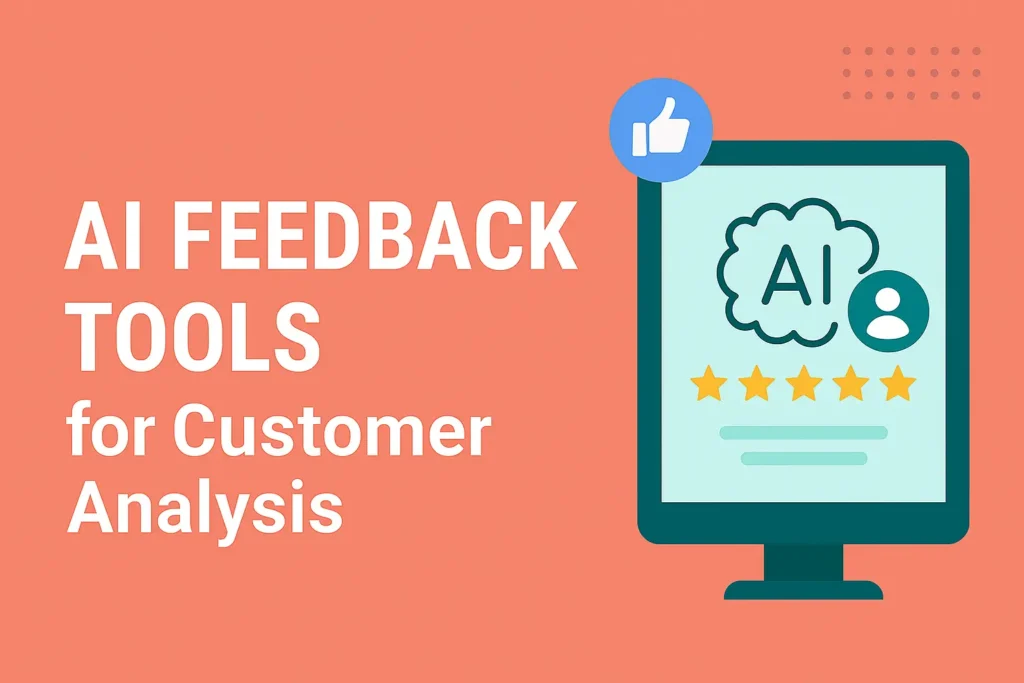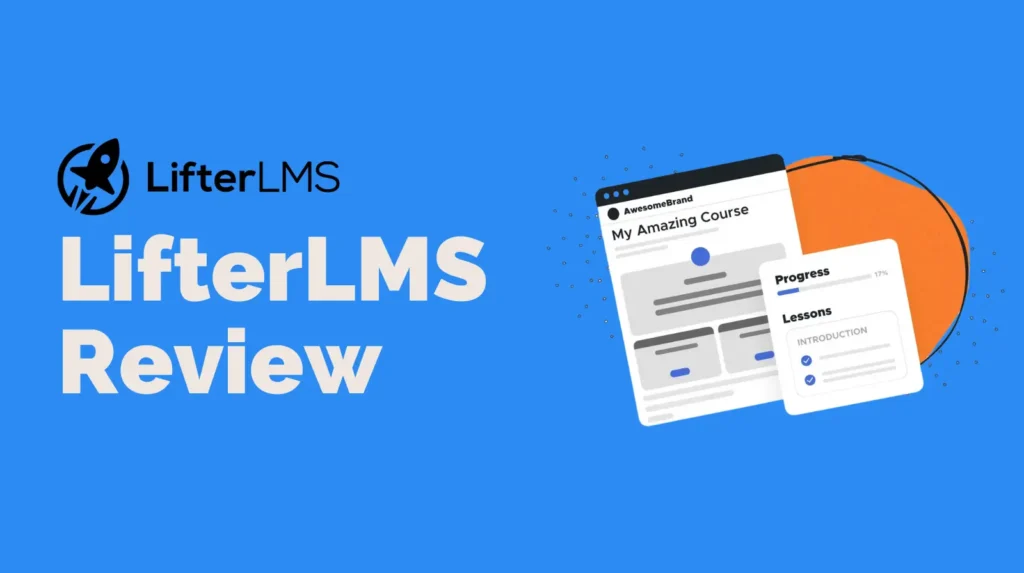Understanding your customers is no longer about sending an annual survey. In a world flooded with reviews, support tickets, and social media comments, you need a way to turn that noise into a clear signal. This is where AI feedback tools, powered by sophisticated sentiment analysis, become a business’s greatest asset.
These platforms don’t just collect feedback; they dissect it. Using Natural Language Processing (NLP), they analyze the tone, intent, and emotion behind every word. This guide will explore the best AI feedback tools available today that can help you transform raw customer opinions into a roadmap for growth.
How AI is Revolutionizing Feedback Analysis
Traditional feedback analysis is slow, manual, and prone to human bias. AI feedback tools automate this entire process, using machine learning to gather, categorize, and interpret customer feedback from dozens of sources at once.
The engine driving this revolution is Sentiment Analysis AI. This technology is what allows a tool to understand the difference between a sarcastic “great, another bug” and a genuinely positive “great new feature!” It detects emotions like joy, frustration, or confusion, providing a layer of emotional intelligence at scale.
For example, if hundreds of users mention the word “confusing” with a negative sentiment score when discussing your new checkout process, the system instantly flags it as a critical pain point allowing you to make data-backed decisions in hours, not weeks.
Key Benefits of Using AI Feedback Tools
- Go from Insight to Action in Minutes: Analyze thousands of responses in the time it takes to drink a coffee. Real-time dashboards eliminate manual review cycles and empower fast, decisive action.
- Build a Better Customer Experience: By understanding precisely how customers feel about specific features or interactions, you can address friction points and double down on what they love.
- Identify Critical Trends Instantly: Is a bug in your latest app release causing a spike in negative feedback? AI tools will spot the pattern long before it impacts your bottom line.
- Drive Smarter Product Development: Customer feedback is a goldmine for your product team. AI organizes suggestions and criticisms into clear themes, revealing exactly what features to build or fix next.
Top AI Feedback & Sentiment Analysis Tools in 2025
Here are our expert picks for the best AI tools that can help you decode customer feedback.
1. Qualtrics Experience iD
Qualtrics is an enterprise-grade powerhouse for experience management (XM). Its AI engine, Experience iD, analyzes feedback from every channel, surveys, chat, call transcripts, and social media to create a holistic view of customer sentiment and behavior. Its acquisition of Clarabridge has further strengthened its best-in-class text and speech analytics.
- Best for: Enterprises needing an all-in-one experience management platform.
2. MonkeyLearn
MonkeyLearn offers a suite of powerful, yet user-friendly, text analysis tools. It’s highly customizable, allowing you to build and train your own models for classifying feedback by topic, urgency, or sentiment without writing a single line of code.
- Best for: Developers and teams wanting a no-code, customizable text analysis toolkit.
3. Medallia
Medallia is a leader in capturing customer and employee signals across their entire journey. Its AI-driven platform excels at collecting feedback from diverse touchpoints (in-store, online, call center) and using that data to predict behavior and prescribe actions for frontline teams.
- Best for: Large B2C companies focused on omnichannel customer journey mapping.
4. Thematic
Thematic is designed to find the “why” behind your data. It uses AI to analyze open-text feedback and automatically discovers themes without requiring manual coding. Its clear visualizations make it easy for product and CX teams to see what truly matters most to customers.
- Best for: Product managers and researchers who need to find “unknown unknowns” in their feedback data.
5. Chattermill
Chattermill unifies customer feedback from surveys, reviews, support tickets, and social media into a single analytics platform. It uses deep learning to provide granular insights into sentiment trends and is particularly popular among fast-growing direct-to-consumer and SaaS companies.
- Best for: Fast-growing eCommerce and SaaS companies needing a unified view of customer feedback.
6. Kapiche
Kapiche is built to help CX leaders understand open-ended feedback quickly and deeply. It requires no manual tagging and integrates with existing CRMs and survey tools. Its standout feature is its ability to quantify the business impact of addressing specific feedback themes.
- Best for: CX leaders who need to quantify themes and present compelling findings to executives.
7. Idiomatic
Idiomatic focuses on turning customer feedback from support conversations into product intelligence. It analyzes support tickets from platforms like Zendesk and Intercom to identify bugs, feature requests, and points of customer friction, helping product teams prioritize their roadmap.
- Best for: Product and support teams looking to extract actionable insights directly from helpdesk tickets.
8. Viable
Viable positions itself as an “automated qualitative analysis” tool. You can ask it questions in plain English (e.g., “What are our customers’ biggest frustrations with our mobile app?”), and it will synthesize answers from all your feedback data sources, complete with illustrative customer quotes.
- Best for: Teams who want to get quick, conversational answers from their customer feedback data.
Key Features to Look for in an AI Feedback Tool
- Multichannel Integrations: The tool must connect seamlessly with your CRM, helpdesk software (like Zendesk or Intercom), survey tools (like SurveyMonkey), and social media platforms.
- Real-Time Dashboards: Look for intuitive, visual reports (charts, word clouds) that allow you to track sentiment trends and drill down into specific topics without delay.
- Customizable Models for Industry Nuance: A model trained for retail might not understand the jargon of healthcare. The best tools allow you to fine-tune the sentiment analysis for your specific industry’s language.
- Scalability and Performance: Ensure the platform can handle a growing volume of feedback as your business expands without slowing down.
Challenges and Considerations
- Data Quality is Paramount: The old adage “garbage in, garbage out” applies here. Incomplete or vague feedback will yield unreliable insights.
- AI Can Miss Sarcasm and Nuance: While models are improving, they can still misinterpret complex human emotions like sarcasm. It’s wise to have a “human-in-the-loop” process to review critically important or ambiguous findings.
- Data Privacy and Compliance: You are handling customer data. Choose a tool that is compliant with regulations like GDPR and has robust security policies.
Conclusion: Stop Guessing, Start Listening
In today’s competitive landscape, businesses that truly listen to their customers will win. AI feedback tools powered by sentiment analysis are no longer a luxury, they are a necessity for any organization serious about improving its products, services, and overall customer experience.
By choosing a tool that aligns with your goals, you can finally move from guessing what customers want to knowing what they need. The future of business is data-driven and customer-centric, and with these AI tools, that future is here today.








